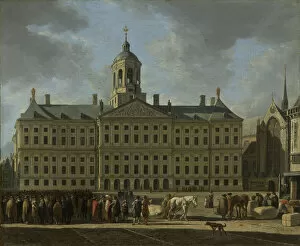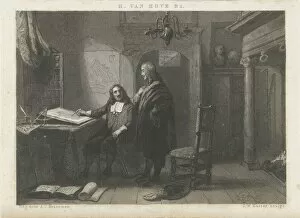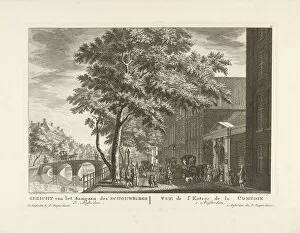Jacob Van Campen Collection
Jacob van Campen was a renowned Dutch artist and architect of the Golden Age in the 17th century
All Professionally Made to Order for Quick Shipping
Jacob van Campen was a renowned Dutch artist and architect of the Golden Age in the 17th century. His contributions to the art world are evident in his various works, including "The Town Hall on Dam Square, Amsterdam" painted in 1672. This captivating oil on canvas masterpiece showcases his exceptional talent and attention to detail. Another notable creation by van Campen is "The Royal Palace, Amsterdam, " which was completed in 1890 by an unknown artist. This architectural marvel stands as a testament to van Campen's innovative designs and enduring legacy. In a portrait capturing his essence, we see Jacob van Campen sitting with outstretched right hand, exuding confidence and creativity, and is through this gesture that we glimpse into the mind of a visionary artist who left an indelible mark on Dutch culture. One of van Campen's most iconic works depicts Hercules conquering Cerberus with Charon ferrying them across the Underworld. This powerful portrayal showcases not only his artistic prowess but also his deep understanding of mythology and storytelling. Van Campen's influence extended beyond paintings; he also designed the magnificent Amsterdam City Hall, leaving behind a lasting architectural gem for generations to admire. The grandeur of this structure reflects his dedication to creating spaces that inspire awe and admiration. His talents were not limited to architecture alone; still life compositions such as "Still Life with Fruit and Flower Garlands" demonstrate his ability to capture beauty in everyday objects. These vibrant displays showcase nature's bounty intertwined with delicate floral arrangements, revealing van Campen's keen eye for detail. In another still life composition titled "Still Life with Books, Sheet Music, Violin, Celestial Globe and an Owl, " we witness van Campen's fascination with knowledge and exploration. Through carefully arranged objects symbolizing wisdom and curiosity, he invites us into a world where imagination knows no bounds.

























